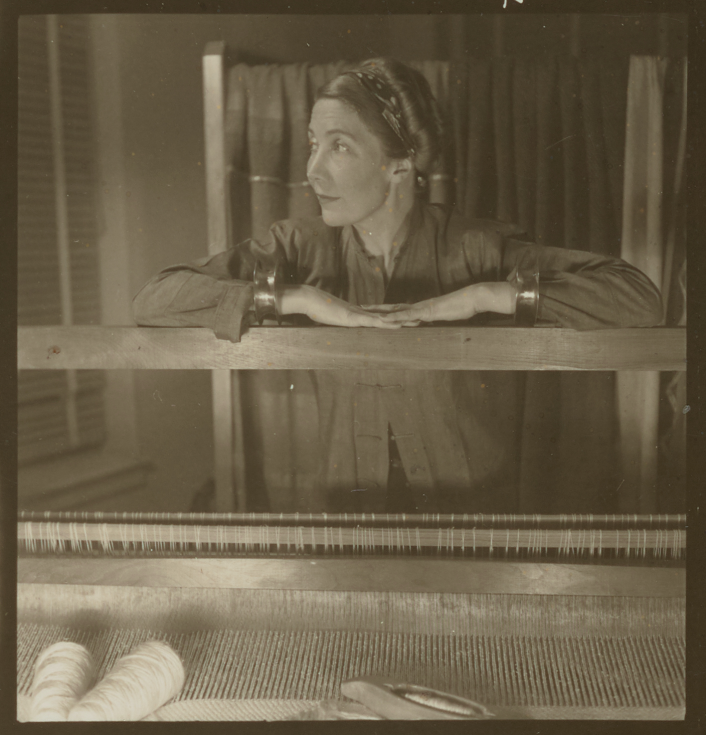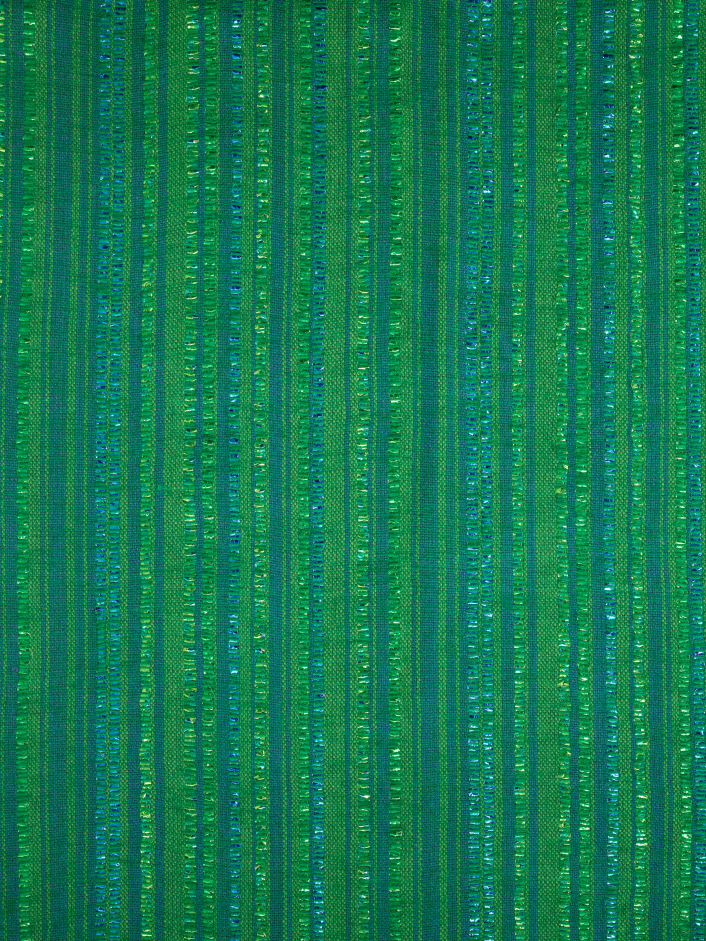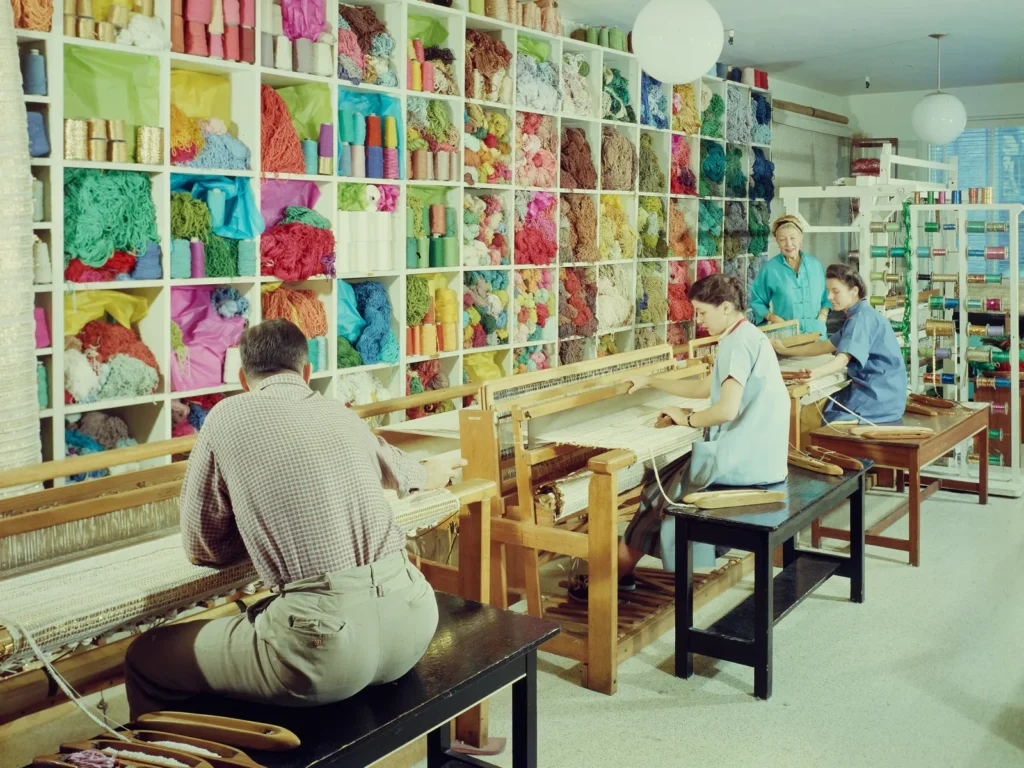In the realm of 20th-century design, one name stands out for her groundbreaking work with unconventional materials and a vibrant, color-saturated palette: Dorothy Liebes. Her innovative fabrics left an indelible mark on the world, adorning everything from airplane seats to high-profile landmarks, yet today her name is not as widely recognized as it should be. In this blog post, we delve into the captivating world of Dorothy Liebes’s weavings, which are currently receiving the attention they rightfully deserve through a new monograph and a retrospective at Cooper Hewitt, alongside a comprehensive online exhibition.
The Legacy of Dorothy Liebes

Dorothy Liebes was not just a weaver; she was a pioneer in the world of design. Her influence touched every corner of the 20th century. From the seats of planes and automobiles to ocean liners, theaters, and hotels, her fabrics found their way into daily life. Her hand-loomed window treatments and wall coverings graced iconic locations such as the United Nations headquarters and buildings designed by the legendary Frank Lloyd Wright. Fashion designers incorporated her fabrics into haute couture, and Hollywood featured her textiles in costumes and light-reflecting set pieces. Even mass-market furnishings bore her signature “Liebes look,” including upholstery, area rugs, curtains, and wallpaper.
Despite her profound impact on design, Dorothy Liebes’s name is often missing from the pages of history. This oversight has prompted the release of a new monograph, “A Dark, A Light, A Bright: The Designs of Dorothy Liebes,” published by Cooper Hewitt in association with Yale University Press in 2023. This 253-page book, complemented by a retrospective at Cooper Hewitt and an extensive online exhibition, seeks to rectify this omission and introduce Liebes’s vivid, textural world to a new generation.
Exploring the World of Dorothy Liebes

The monograph and exhibitions draw extensively from the Dorothy Liebes Papers in the Smithsonian archives. They provide a comprehensive overview of her remarkable career, delving into her contributions to modern interior design, film, fashion, hand weaving, and the textile industry. More than 175 pieces, including woven samples, apparel, furniture, photos, and videos, showcase Liebes’s distinctive use of color and materials. Her multifaceted career included roles as a designer-weaver, colorist, stylist, trendsetter, industry spokesperson, educator, mentor, and global craft ambassador. She had a keen eye for interpreting and responding to the evolving trends and innovations of the 20th century.
A Life of Innovation and Resilience

Dorothy Liebes’s career spanned from the Great Depression in the 1930s when she opened her first studio in San Francisco to her passing in 1972 in New York City. Her journey intersected with significant moments in American history, including the restrictions on certain fibers and dyes during World War II. These restrictions led her to experiment with unconventional materials. In the postwar years, she embraced the invention of new polyester and nylon fibers, promoting their durability and other qualities. She even worked as a consultant for manufacturers like DuPont, Sears, and Doebeckmun Company, helping popularize metallic yarn known as Lurex.
A Visual Feast

The exhibitions showcase Dorothy Liebes’s textiles under gallery lights, where they twinkle and glitter. Some pieces burst forth in neon brightness, while others radiate jewel tones or soothe the eye with muted pastels. The accompanying book, with its dark green, cloth-covered case binding and vibrant typography, provides readers with a sensory experience akin to viewing the weavings in person. Lush, full-page close-ups reveal the intricate details of her work, inviting readers to virtually touch the velvety chenilles, fluffy tufts, loopy fringes, and other textures that make up her artistry.
A Tribute to a Design Icon
The monograph and exhibitions, with their meticulous scholarship and curation, serve as a heartfelt tribute to the pioneering designer. Through audio recordings, videos, and personal quotes, they bring Dorothy Liebes’s voice to life, inspiring us with a message from the past to think creatively and boldly. As Liebes herself passionately advocated, “Don’t be afraid of color.”
Dorothy Liebes’s legacy lives on through these exhibitions, ensuring that her extraordinary contributions to the world of design are celebrated and cherished by a new generation.








